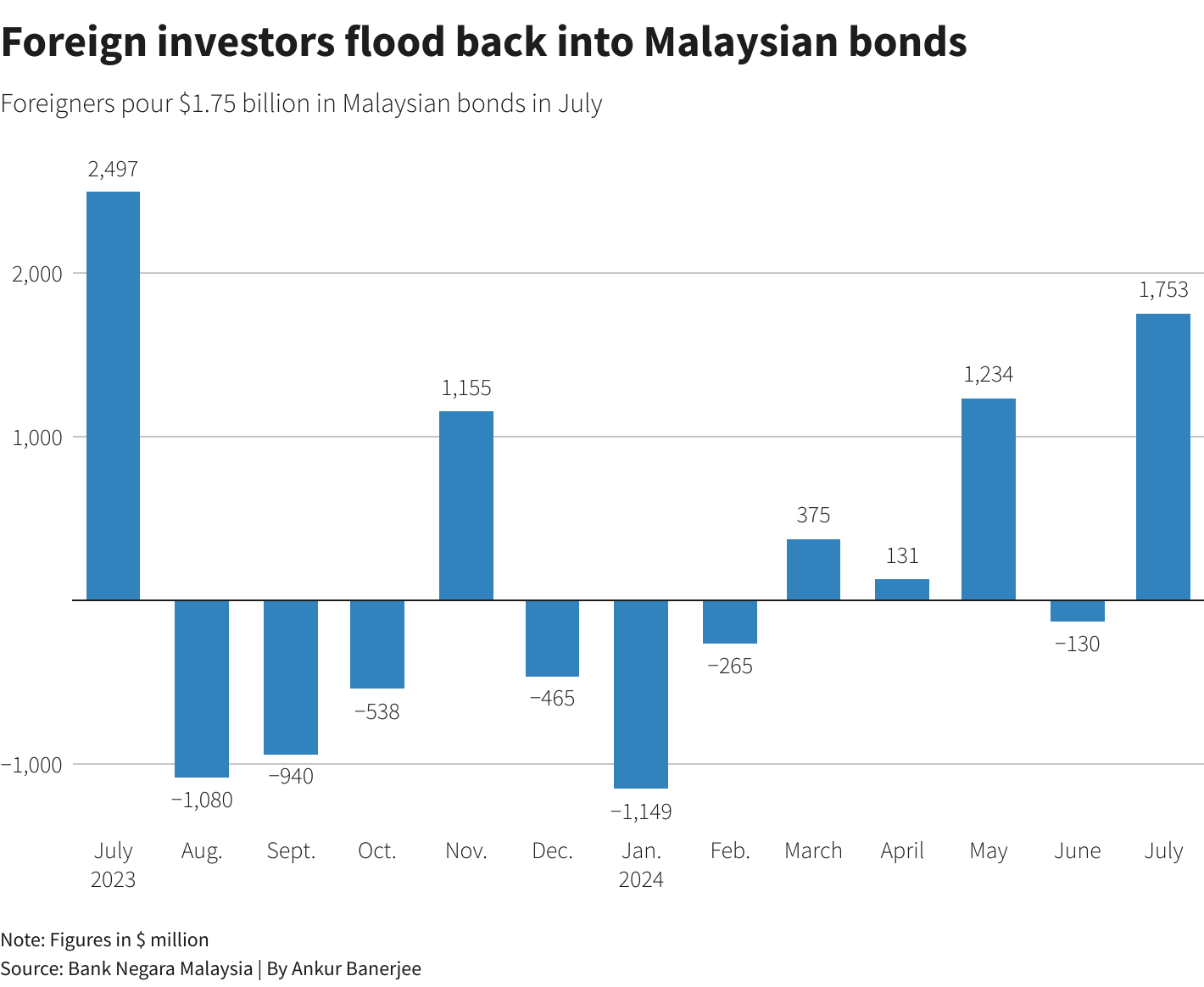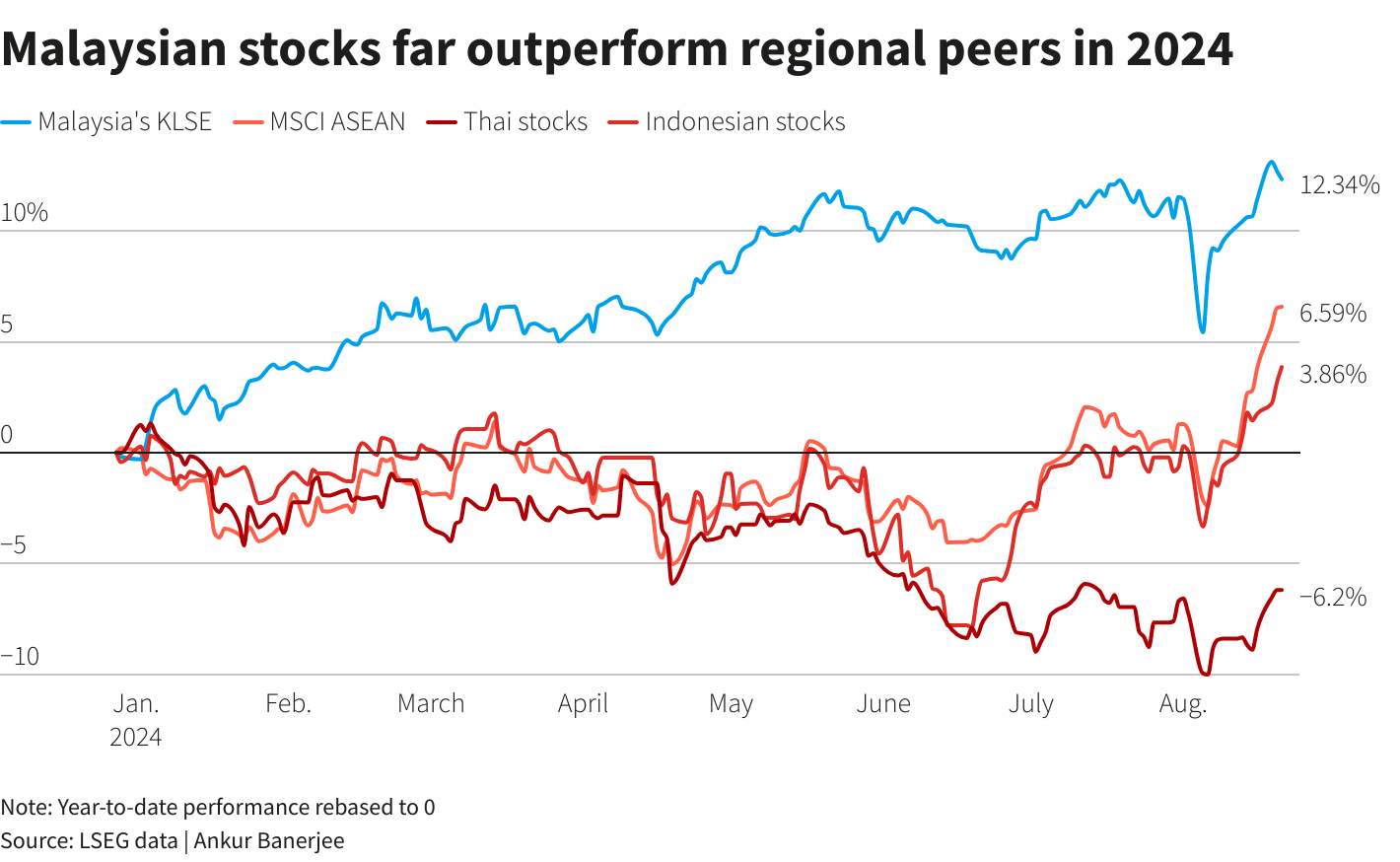Analysts say the ringgit has been the fulcrum of this outperformance, and Asia’s best-performing currency thus far in 2024 should do even better as the Federal Reserve starts cutting rates, increasing the appeal of Malaysian bonds.


“It’s been a fairly startling outperformance for the currency,” said Leonard Kwan, portfolio manager of T. Rowe Price’s dynamic emerging markets bond strategy. “I think most of the returns of the performance have come from the currency, rather than on the bond side.”
The comeback story for Malaysia is underpinned by an economy that expanded at its fastest rate in 18 months in the second quarter and a stable political environment since Anwar Ibrahim became prime minister in 2022 after years of turbulence.
The relative underperformance of Malaysia’s rivals in the region has helped, with political turmoil in Thailand and concerns around the incoming Indonesian government rattling investors.
Foreigners now own 20% of outstanding Malaysian bonds, according to central bank data.

The ringgit touched an 18-month high against the dollar on Thursday, taking its gains for the year to more than 5%, a far cry from earlier this year when it languished near 26-year lows.
Ben Luk, senior multi asset strategist at State Street Global Markets, said the ringgit benefited from the yen’s strength in recent weeks as investors unwound the popular carry trade and rotated into currencies that were “under-owned and under-valued”.
The stand-out sectors of construction, power, and infrastructure offer “investors a chance to move beyond the tech and consumer names that dominate in other regions”, Vikas Pershad, portfolio manager for Asian equities at M&G Investments, said.
“This diversification potential is one of the key factors that makes Malaysia an attractive investment destination.”

Malaysia’s appeal should improve as the U.S. and regional economies cut rates while the Malaysian central bank holds them steady amid strong growth.
That’s likely to keep the ringgit supported and make Malaysian bonds attractive. Dollar 10-year yields used to be 60 basis points higher than Malaysian ones just three months ago, and now they have converged.
Sign up here.
Reporting by Ankur Banerjee in Singapore; Editing by Vidya Ranganathan and Mrigank Dhaniwala
Our Standards: The Thomson Reuters Trust Principles.







